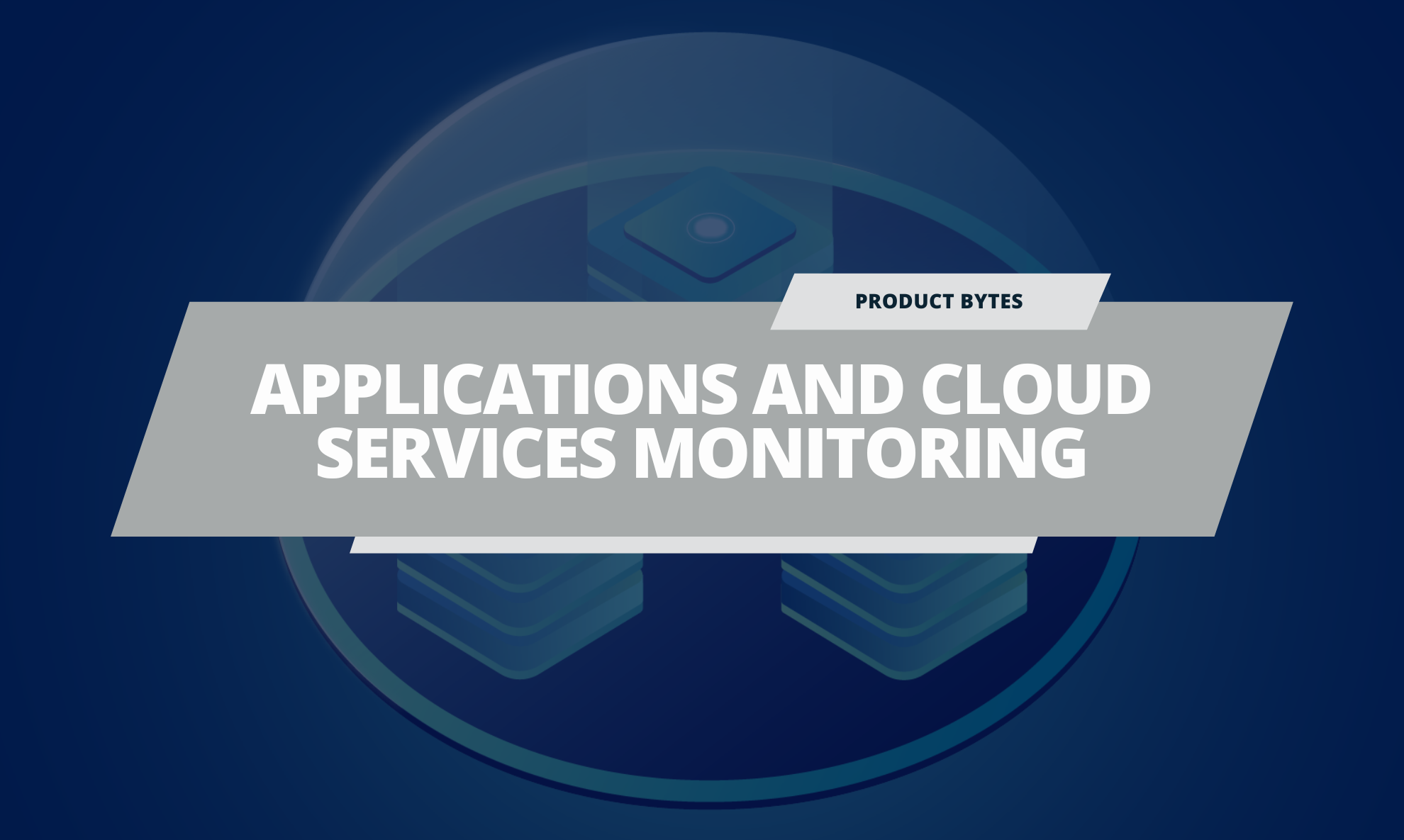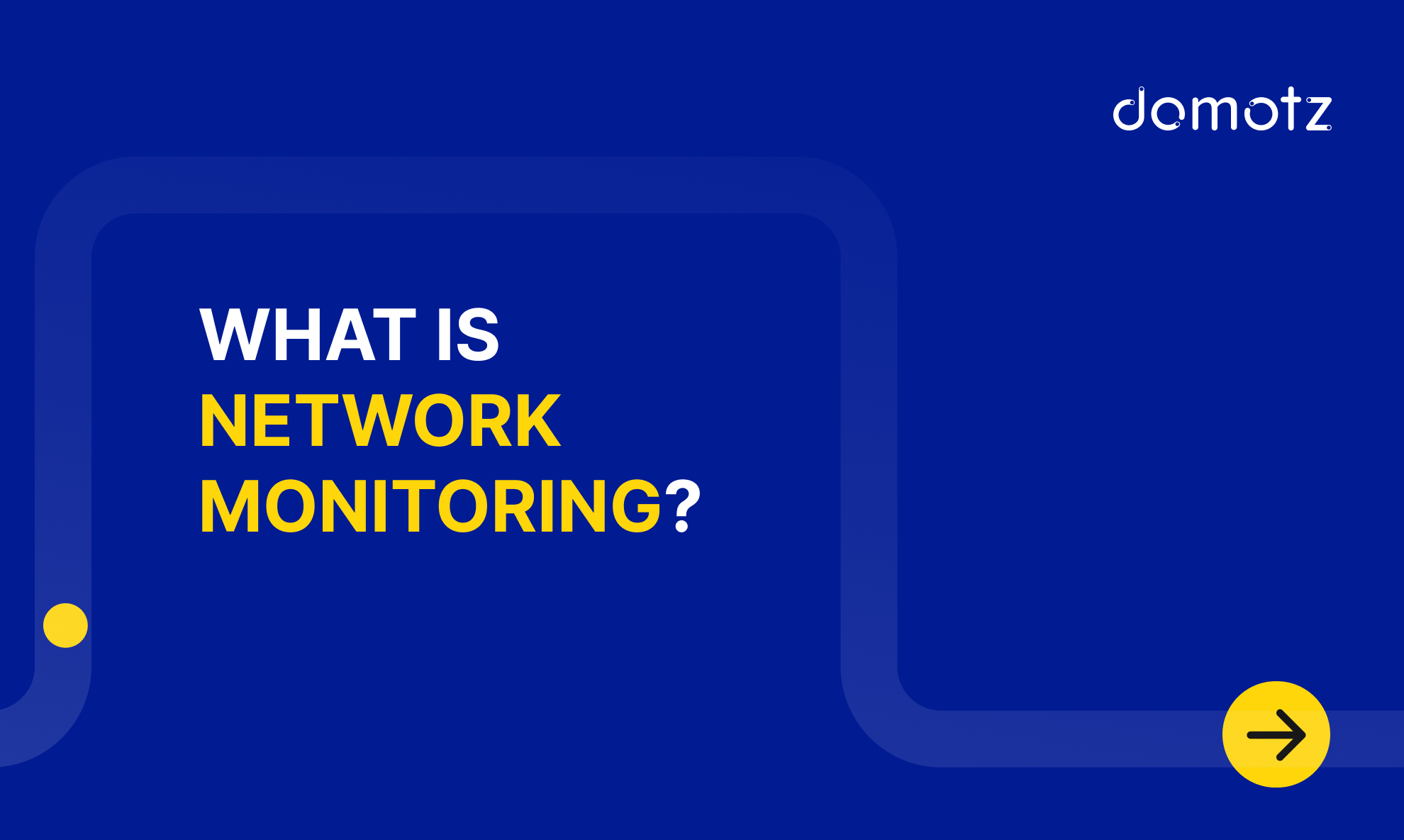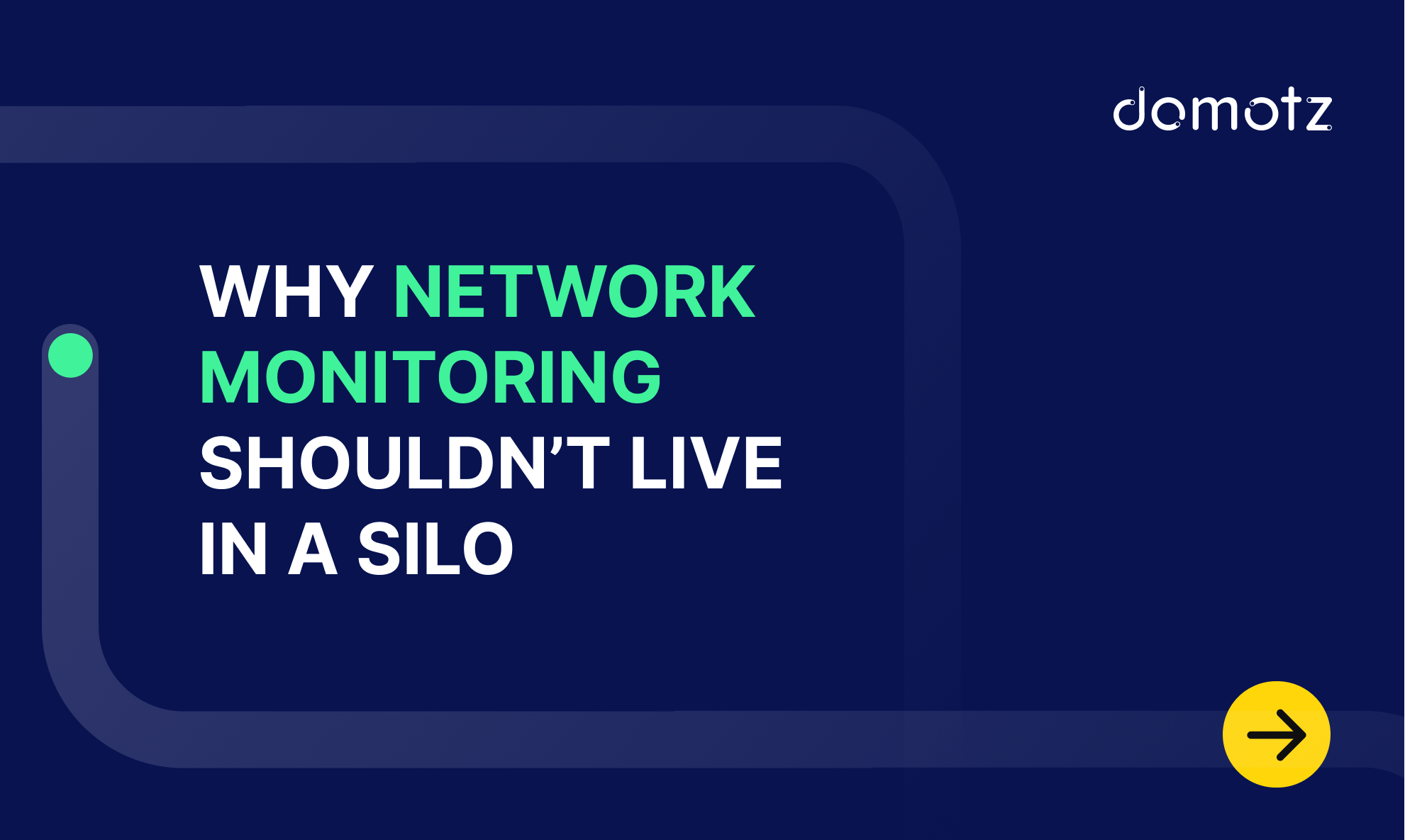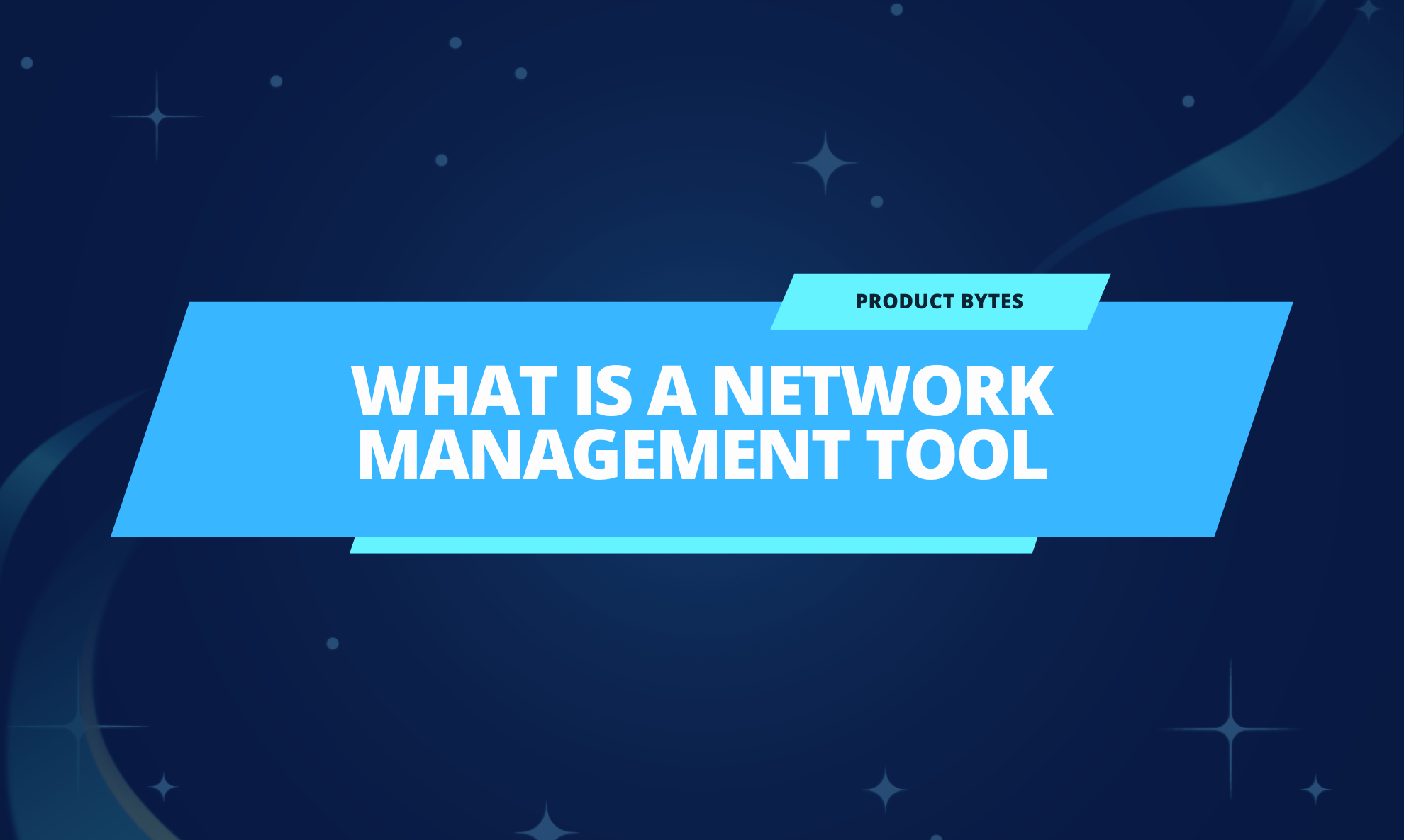Applications monitoring with Domotz
At Domotz, we continuously work hard to enhance the monitoring capabilities of our software to enable users to monitor and manage cloud-based applications, devices, and web services’ network performance, availability, and security by leveraging ready-to-use custom scripts.
For instance, tracking real-time network performance and usage data can identify potential issues, reduce downtime, and optimize network performance.
We have developed new applications in this area, offering centralized and efficient solutions for monitoring and managing complex networks.
Here is a snapshot of exciting scripts to monitor cloud services, applications, servers, and databases.
- NGINX
- Apache
- Kubernetes
- pfSense
- FreeBSD
- Redis
- Website content monitoring
- SSL certificate monitoring
- Docker
- MySQL
- AWS
- iDRAC
- HPE iLO
- Linux Services
- macOS
- RabbitMQ
- Raspbian
- Sophos Firewall
- VMware ESXi
- Windows
1. Nginx
If you use Nginx, you’re in luck, as we have an Nginx Monitoring available with Domotz.
Many people, even millions, already use Nginx for website performance. The Nginx web server software helps keep your website running quickly.
Our service uses HTTP and SSH protocols to securely connect to any Nginx instance. From there, it extracts a range of variables to reveal active connections, requests, tasks, and performance stats, such as CPU usage. No more black-box networking!
Like all our offerings, this is a truly seamless integration. Secondly, Domotz delivers automated insights without impacting your server’s performance or requiring complex configuration processes. In short, it’s the perfect complement to Nginx’s easy-to-use, flexible approach. Learn more about setting up the Nginx monitoring tool.
2. Apache
Apache s the world’s most popular web server, so there are a million ways to administer it. Domotz makes building a stronger foundation for effective Apache HTTP Server monitoring painless. Our Apache Monitoring covers the fundamentals, so you don’t have to worry about the details.
In other words, with our easy integration, you can instantly gauge the amount and duration of requests received at any time. Want to scan Apache’s mod_status output for changes in performance or traffic levels, set alerts, or audit your configuration settings to ensure an optimal setup? It’s as simple as creating a custom driver. Learn more about Apache Monitoring Tool from our blog.
3. Kubernetes
Kubernetes is the de-facto standard for open-source container orchestration, but it can be challenging to wrangle. From configuring nodes to monitoring usage and uptime, K8s users have their work cut out.
We’re very excited to announce the launch of a script to monitor Kubernetes. Our custom script lets you review and adjust node, pod, or cluster performance.
Whether you want to investigate performance at the Goroutine or thread level, zero in on TLS handshake errors, and request authentications, Domotz lets you tackle it all from a single panel view and export the data for simplified reporting! Do more with K8s. Try one of our Kubernetes monitoring integration by building your dynamic metrics and responsive feedback features.
Learn more about our Kubernetes Monitoring Tool.
4. pfSense
pfSense is a free, open-source firewall and router OS. To tell you more, it’s based on the FreeBSD operating system but includes its kernel. The name comes from the fact that it uses the PF firewalling software.
To summarize, there are many advantages to using pfSense, including, for instance:
- Ease of use
- Flexibility
- Community support
If you need a way to monitor your pfSense instance, you can easily do this with Domotz for an affordable monthly cost with no long-term commitment or subscription. Learn more about pfSense monitoring with Domotz.
You can read our blog about the advantages of using the pfSense Monitoring Tool.
5. FreeBSD
FreeBSD is an open-source Unix-like operating system that powers modern servers, desktops, and embedded platforms. It has a robust architecture and performance capabilities and is strong on data protection. On top of that, FreeBSD runs on a wide range of architectures, and being open-source, it’s also license free.
Our FreeBSD monitoring leverages our custom Integration functionality, allowing you to monitor the pfSense process and the processes running on the FreeBSD server. In other words, it helps you proactively monitor system status, ingress/egress statistics, and more.
Last but not least, FreeBSD it’s a favorite product of Netflix, WhatsApp, IBM, and many more.
Learn more about FreeBSD Monitoring with Domotz.
6. Redis
Remote Dictionary Server (Redis) is an in-memory data structure store. It’s commonly used as a database, streamlining engine, caching, and message broker. It supports a wide range of data structures, for instance, strings, hashes, lists, and sorted sets with range queries, bitmaps, hyper logs, geospatial indexes, and streams. Redis is known for its speed, flexibility, and scalability, which makes it a popular choice for gaming leaderboards, machine learning, real-time analytics, and more.
Our Domotz Redis monitoring tool helps you manage your Redis system through Domotz. Take a look at some of the operations you can perform:
- Check replication, keyspace, cluster, and clients on your Redis server
- Extract configuration, resource consumption, cluster definition, replication statistics, related client information, and more.
- Extract relevant statistics from your Redis server
Learn more about our Redis Monitoring Tool.
7. Website Content Monitoring
Website content monitoring is performing regular checks to monitor your website’s uptime, security, and performance.
Use website content monitoring for:
- Monitor web performance
- Track unusual behavior
- Get insights
In short, Domotz allows you to proactively monitor the content and response time of any content on your website and HTML, JSON, and PHP website pages. Users can use the generic HTTP content monitoring driver to enable the custom integration for generic HTTP/HTTPS-based content monitoring.
As a result, our website performance monitoring can help your customers maintain a professional appearance online and safeguard their website visitors against potentially harmful issues. It can help your customers maintain a professional appearance online and safeguard their website visitors against potentially harmful issues.
Learn more about website content monitoring.
8. SSL Certificate Monitoring
It’s hard to keep looking forward when you’re constantly dodging security pitfalls, so why not get ahead of the game? Domotz tool gives you fine-grained insights into the protocols that define your security stance, with SSL and TLS monitoring specifically engineered to broaden your perspective.
Our custom integration lets you watch over multiple assets from a single dashboard simultaneously. Instead of taking your security practices for granted, which you should never do, you can investigate, audit, and trace certificates for different websites, issuers, and devices via a comprehensive top-down view. Check out the driver examples for SSL certificate monitoring to take back control of how you do security.
Learn more about setting up the SSL/TLS Certificate monitoring integration.
9. Docker
Docker is an application that helps you build, test, run, and share modern applications.
Domotz helps you monitor the performance of every Docker container running on your Docker engine. Furthermore, our custom integration functionality enables you to monitor statistics from your Docker system, such as statuses, counters, hardware resource usage, images, and more. In addition, you can use Domotz to troubleshoot performance issues and analyze the health of your Docker containers.
Use Docker and Domotz to easily monitor any Docker container and images on your instances.
Learn more about Docker monitoring with Domotz.
10. MySQL
We integrated with MySQL. This is the most popular open-source system. Customers can run OLTP, OLAP, and machine learning workloads directly from MySQL Database.
Our custom integration functionality allows you to:
- Monitor MySQL server hosted from a Linux machine
- Easily record MySQL ey metrics
- Monitor the service status and version
- Keep track of the memory used by the service
Start using mySQL with Domotz with the MySQL driver provided by the Domotz example library.
Learn more about MySQL monitoring monitoring with Domotz.
11. AWS
Amazon Web Services (AWS) provides on-demand cloud computing platforms and APIs to individuals, companies, and governments on a metered, pay-as-you-go basis.
By leveraging the HTTP protocol and the CloudWatch API, we created a set of new scripts to monitor AWS instances’ properties. Our AWS monitoring custom scripts allow you to monitor general information such as CPU, disk operations, and network properties, but also CloudWatch metrics for various AWS services. Lastly, monitor and analyze the performance of EBS.
Read more on out blog post article about AWS monitoring tool.
12. iDRAC
Proactively monitor Integrated Dell Remote Access Controller (iDRAC) with Domotz! iDRAC is a management platform for server monitoring and if you monitor Dell PowerEdge servers, you should try our solution.
To sum up, use our iDRAC monitoring pre-configured SNMP templates, you will:
- Optimize your iDRAC management
- Improve the productivity and ability of your Dell PowerEdge servers
- Receive notifications about system issues
- Get a better insight into the performance of the servers you manage
13. HPE iLO
Integrated Lights-Out, or iLO, is a proprietary embedded server management technology by Hewlett-Packard Enterprise (HPE) which provides out-of-band management facilities. You can “unlock” iLO machines in Domotz to read the Operating System’s information.
Use the Domotz monitoring feature to extract additional information about your devices. Quickly check the Operating System name, version, vendor, architecture, serial number, and build number. In addition, our network monitoring software enables you to monitor the above details in a tailor-made customized table (Monitoring Dashboard section).
14. Linux Services
Domotz allows you to monitor Linux, a Unix-like, open-source, and community-developed operating system (OS) for computers, servers, mainframes, mobile devices, and embedded devices.
By using standard network protocols, the Domotz custom scripts will allow you to retrieve valuable data and execute actions on the monitored devices and services. Build or customize scripts according to your network monitoring needs. It’s easy, it’s Domotz!
15. macOS
Looking to monitor macOS devices?
Try our Operating System (OS) monitoring feature to get quick access to detailed information about the macOS devices you monitor. For example, OS name, OS version, vendor, architecture, and serial number.
16. RabbitMQ
Do you know that RabbitMQ is one of the most popular open-source message brokers with tens of thousands of users? However, RabbitMQ is also used to manage communication between applications, databases, and devices. We enable you to proactively monitor RabbitMQ performance and instances (single nodes or clusters) through Domotz!
Three different custom scripts have been developed to offer an initial set of variables and stats that can be monitored:
- System: this script dynamically creates system metrics for the RabbitMQ Nodes and Clusters
- Exchanges: this script dynamically creates a table with parameters and statistics for all the exchanges discovered on the RabbitMQ instances
- Queues: this script dynamically creates a table with parameters and statistics for all the queues discovered on the RabbitMQ instances
17. Raspbian
Raspbian is a free operating system (OS) based on Debian that runs on Raspberry Pi hardware. Rely on our OS monitoring feature to optimize your Raspberry Pi monitoring and extract additional information about your devices.
18. Sophos Firewall
Sophos Firewall enables users to extend their network anywhere, easily and affordably, with a full portfolio of SD-WAN, cloud, and VPN secure access.
Simplify firewall monitoring with Domotz and Sophos.
Monitor specific items for your Sophos firewalls using the following pre-configured SNMP sensors:
- Sophos Firewall General Monitoring: This SNMP pre-configured sensor extracts general properties such as device model, firmware version, and system appliance key.
- Sophos Firewall Uptime: Use this template to monitor the uptime of your system.
- Sophos Firewall Policies: Monitor configuration policy properties such as policy name, connection name, and active tunnel count
- Licenses Expiration: Monitor the various Sophos Firewall software licenses expiration.
19. VMware ESXi
Do you manage VMware ESXi virtual machines? Use the Domotz OS monitoring feature. Quickly access detailed information about the VMware ESXi virtual computers you monitor. For example, OS name, OS version, vendor, architecture, and serial number.
20. Windows
Last but not least, by leveraging PowerShell commands, we created several scripts to monitor:
- Windows Active Directory Privileged users: Here, you will find a variable with the total number of privileged users. In addition, you’ll find a table with the privileged AD users count listed by group membership.
- Windows Audit Settings: you can extract information about security audit capabilities for client devices and servers.
- Windows CPU usage: Through this script, you will know the processing power that has been exhausted for processing data and running programs.
- Windows Current Sessions: Use this script to monitor the logged-in users on Windows, the state of your currently connected Windows Sessions, and see when each user logged in and performed the login.
- Windows Endpoints for Reachable Hosts: You will be able to monitor if hosts are reachable, get notified of value changes, monitor whether a VPN connection is up and running, and so much more.
- Windows Services: This script enables you to create long-running executable applications that run in their own Windows sessions.
- Windows Update Agent (WUA): WUA is a Windows service responsible for managing Windows Updates on Windows systems. To clarify, you can use it to download and install updates and report the status of updates to the user. You can also configure Windows update settings.
Looking Ahead for Cloud Network Monitoring
In conclusion, at Domotz, we constantly work to keep you on top of your infrastructure. We love simplifying remote monitoring with new integrations that cater to forward-thinking enterprise use cases. We’ll keep creating and innovating to make your IT experience as convenient as possible.
No matter how or where your distributed computing happens, we have powerful Cloud Network Monitoring integrations to make it more insightful and data-driven. From Raspbian and Windows to Cisco, Chromecast, and Slack, you’ll likely find a Domotz integration that can ease your pain as an admin, developer, or team leader.
As always, you’ll find example scripts in our library, so creating your custom setup has always been challenging. Happy monitoring, and let us know if you have questions!



